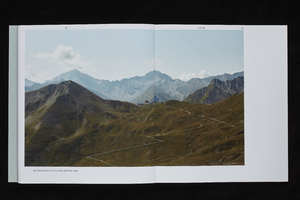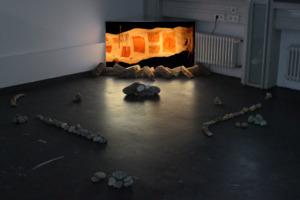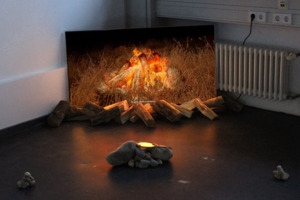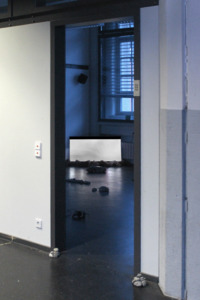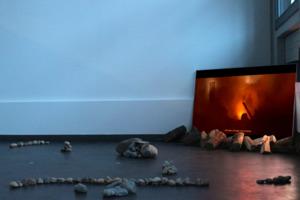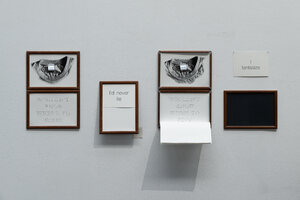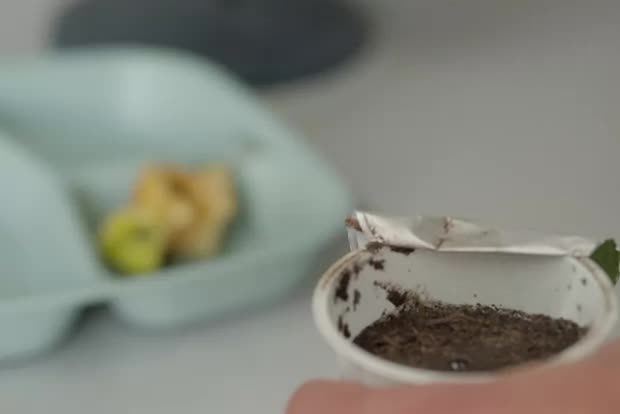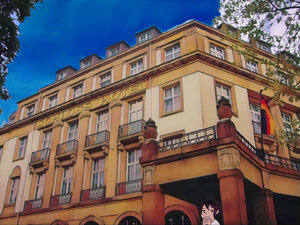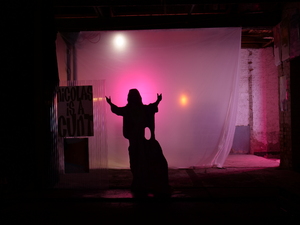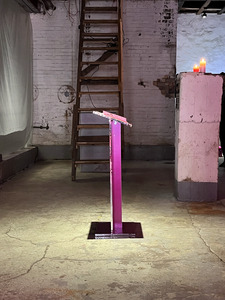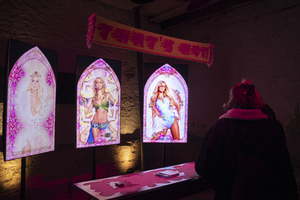"Diplomarbeit"
| Begriff | Diplomarbeit |
| Metakey | Typ des Projekts/Werks (creative_work:type) |
| Typ | Keyword |
| Vokabular | Werk |
485 Inhalte
- Seite 1 von 41
0IN BEARBEITUNG – Alpine Landschaften
- Titel
- 0IN BEARBEITUNG – Alpine Landschaften
- Titel (en)
- IN BEARBEITUNG – Alpine Landschaften
- Autor/in
- Typ des Projekts/Werks
- Titel
- 0IN BEARBEITUNG – Alpine Landschaften
- Urheberrechtshinweis
- Elias Siebert
- Rechtsschutz/Lizenz
- Medienersteller/in
- Projektleiter/in
- Semester
- Importiert am
- 04.07.2018
- Übergeordnete Sets
- 1
About Fighting the Fear (of the World) - Installation
- Titel
- About Fighting the Fear (of the World) - Installation
- Titel (en)
- About Fighting the Fear (of the World)
- Autor/in
- Beschreibung (de)
- "Über das Bekämpfen der Angst (vor der Welt)" ist eine spekulative Videoarbeit, die ein Spektrum von Phänomenen rund um Karten, Angst, Krieg, Reisen und den Körper abdeckt, wobei der Schwerpunkt auf der Praxis der Kartierung als Instrument zur Unterdrückung und Kontrolle von Land und Menschen liegt. Das Video versucht, einen Rahmen für das Thema zu schaffen, indem es viele verschiedene Geschichten zu einem Cluster zusammenführt, der vielleicht nicht repräsentativ ist, aber einige Teile des Themas beleuchtet. Ästhetisch und strukturell ist das Video von Rollenspielen, der Pre-Vis-Technik (die in Filmproduktionen verwendet wird) und Found Footage inspiriert. Das Szenario ist in einer fernen Zukunft angesiedelt, in der Klimawandel und Massenaussterben längst ihre Auswirkungen gezeigt haben und die Bestien, die vor der großen Kolonisierung über das Unbekannte wachten, zurückgekehrt sind. In der Rolle der Hauptfigur sucht der Zuschauer, angeleitet von einem Erzähler, nach Überresten der alten Welt, um zu verstehen, warum alles kartiert werden musste.
- Beschreibung (en)
- "About Fighting the Fear (of the World)" is a speculative video work that covers a spectrum of phenomena around maps, fear, war, traveling, and the body, with a focus on the practice of mapping as a tool to oppress and control land and people. The video attempts to frame the issue by bringing together many different stories to create a cluster that may not be representative but illuminates some parts of the issue. Aesthetically and structurally, the video is inspired by role-playing games, pre-vis technique (used in film productions), and found footage. The scenario is set in a distant future in which climate change and mass extinction have long since had an impact and beasts that used to watch over the unknown before the big colonization have returned. As the main character, the viewer searches for remnants of the old world, guided by a narrator, in order to understand why everything had to be mapped.
- Typ des Projekts/Werks
- Schlagworte
- Datierung
- 22.02.2024
- Mitwirkende
- Dank an
- Sprache
- Untertitel (Film)
- Material
- Technik/Verfahren/Formate
- MP4
- Abmessungen
- 2500 x 1080 px
- Dauer
- 26 min
- Ort: Institution
- Ort
- Werkschau und Diplominstallation in Raum 222, Video-Screening im Kino im Blauen Salon
- Stadt
- Land
- Titel
- About Fighting the Fear (of the World) - Installation
- Urheberrechtshinweis
- Janosch Bela Kratz
- Freigabe Nutzung HfG
- Medienersteller/in
- Projektleiter/in
- Semester
- Studiengang
- Typ der Abschlussarbeit
- Importiert am
- 03.03.2024
- Übergeordnete Sets
- 1
About Fighting the Fear (of the World) - Installation
- Titel
- About Fighting the Fear (of the World) - Installation
- Titel (en)
- About Fighting the Fear (of the World)
- Autor/in
- Beschreibung (de)
- "Über das Bekämpfen der Angst (vor der Welt)" ist eine spekulative Videoarbeit, die ein Spektrum von Phänomenen rund um Karten, Angst, Krieg, Reisen und den Körper abdeckt, wobei der Schwerpunkt auf der Praxis der Kartierung als Instrument zur Unterdrückung und Kontrolle von Land und Menschen liegt. Das Video versucht, einen Rahmen für das Thema zu schaffen, indem es viele verschiedene Geschichten zu einem Cluster zusammenführt, der vielleicht nicht repräsentativ ist, aber einige Teile des Themas beleuchtet. Ästhetisch und strukturell ist das Video von Rollenspielen, der Pre-Vis-Technik (die in Filmproduktionen verwendet wird) und Found Footage inspiriert. Das Szenario ist in einer fernen Zukunft angesiedelt, in der Klimawandel und Massenaussterben längst ihre Auswirkungen gezeigt haben und die Bestien, die vor der großen Kolonisierung über das Unbekannte wachten, zurückgekehrt sind. In der Rolle der Hauptfigur sucht der Zuschauer, angeleitet von einem Erzähler, nach Überresten der alten Welt, um zu verstehen, warum alles kartiert werden musste.
- Beschreibung (en)
- "About Fighting the Fear (of the World)" is a speculative video work that covers a spectrum of phenomena around maps, fear, war, traveling, and the body, with a focus on the practice of mapping as a tool to oppress and control land and people. The video attempts to frame the issue by bringing together many different stories to create a cluster that may not be representative but illuminates some parts of the issue. Aesthetically and structurally, the video is inspired by role-playing games, pre-vis technique (used in film productions), and found footage. The scenario is set in a distant future in which climate change and mass extinction have long since had an impact and beasts that used to watch over the unknown before the big colonization have returned. As the main character, the viewer searches for remnants of the old world, guided by a narrator, in order to understand why everything had to be mapped.
- Typ des Projekts/Werks
- Schlagworte
- Datierung
- 22.02.2024
- Mitwirkende
- Dank an
- Sprache
- Untertitel (Film)
- Material
- Technik/Verfahren/Formate
- MP4
- Abmessungen
- 2500 x 1080 px
- Dauer
- 26 min
- Ort: Institution
- Ort
- Werkschau und Diplominstallation in Raum 222, Video-Screening im Kino im Blauen Salon
- Stadt
- Land
- Titel
- About Fighting the Fear (of the World) - Installation
- Urheberrechtshinweis
- Janosch Bela Kratz
- Freigabe Nutzung HfG
- Medienersteller/in
- Projektleiter/in
- Semester
- Studiengang
- Typ der Abschlussarbeit
- Importiert am
- 03.03.2024
- Übergeordnete Sets
- 1
About Fighting the Fear (of the World) - Installation
- Titel
- About Fighting the Fear (of the World) - Installation
- Titel (en)
- About Fighting the Fear (of the World)
- Autor/in
- Beschreibung (de)
- "Über das Bekämpfen der Angst (vor der Welt)" ist eine spekulative Videoarbeit, die ein Spektrum von Phänomenen rund um Karten, Angst, Krieg, Reisen und den Körper abdeckt, wobei der Schwerpunkt auf der Praxis der Kartierung als Instrument zur Unterdrückung und Kontrolle von Land und Menschen liegt. Das Video versucht, einen Rahmen für das Thema zu schaffen, indem es viele verschiedene Geschichten zu einem Cluster zusammenführt, der vielleicht nicht repräsentativ ist, aber einige Teile des Themas beleuchtet. Ästhetisch und strukturell ist das Video von Rollenspielen, der Pre-Vis-Technik (die in Filmproduktionen verwendet wird) und Found Footage inspiriert. Das Szenario ist in einer fernen Zukunft angesiedelt, in der Klimawandel und Massenaussterben längst ihre Auswirkungen gezeigt haben und die Bestien, die vor der großen Kolonisierung über das Unbekannte wachten, zurückgekehrt sind. In der Rolle der Hauptfigur sucht der Zuschauer, angeleitet von einem Erzähler, nach Überresten der alten Welt, um zu verstehen, warum alles kartiert werden musste.
- Beschreibung (en)
- "About Fighting the Fear (of the World)" is a speculative video work that covers a spectrum of phenomena around maps, fear, war, traveling, and the body, with a focus on the practice of mapping as a tool to oppress and control land and people. The video attempts to frame the issue by bringing together many different stories to create a cluster that may not be representative but illuminates some parts of the issue. Aesthetically and structurally, the video is inspired by role-playing games, pre-vis technique (used in film productions), and found footage. The scenario is set in a distant future in which climate change and mass extinction have long since had an impact and beasts that used to watch over the unknown before the big colonization have returned. As the main character, the viewer searches for remnants of the old world, guided by a narrator, in order to understand why everything had to be mapped.
- Typ des Projekts/Werks
- Schlagworte
- Datierung
- 22.02.2024
- Mitwirkende
- Dank an
- Sprache
- Untertitel (Film)
- Material
- Technik/Verfahren/Formate
- MP4
- Abmessungen
- 2500 x 1080 px
- Dauer
- 26 min
- Ort: Institution
- Ort
- Werkschau und Diplominstallation in Raum 222, Video-Screening im Kino im Blauen Salon
- Stadt
- Land
- Titel
- About Fighting the Fear (of the World) - Installation
- Urheberrechtshinweis
- Janosch Bela Kratz
- Freigabe Nutzung HfG
- Projektleiter/in
- Semester
- Studiengang
- Typ der Abschlussarbeit
- Importiert am
- 03.03.2024
- Übergeordnete Sets
- 1
About Fighting the Fear (of the World) - Installation
- Titel
- About Fighting the Fear (of the World) - Installation
- Titel (en)
- About Fighting the Fear (of the World)
- Autor/in
- Beschreibung (de)
- "Über das Bekämpfen der Angst (vor der Welt)" ist eine spekulative Videoarbeit, die ein Spektrum von Phänomenen rund um Karten, Angst, Krieg, Reisen und den Körper abdeckt, wobei der Schwerpunkt auf der Praxis der Kartierung als Instrument zur Unterdrückung und Kontrolle von Land und Menschen liegt. Das Video versucht, einen Rahmen für das Thema zu schaffen, indem es viele verschiedene Geschichten zu einem Cluster zusammenführt, der vielleicht nicht repräsentativ ist, aber einige Teile des Themas beleuchtet. Ästhetisch und strukturell ist das Video von Rollenspielen, der Pre-Vis-Technik (die in Filmproduktionen verwendet wird) und Found Footage inspiriert. Das Szenario ist in einer fernen Zukunft angesiedelt, in der Klimawandel und Massenaussterben längst ihre Auswirkungen gezeigt haben und die Bestien, die vor der großen Kolonisierung über das Unbekannte wachten, zurückgekehrt sind. In der Rolle der Hauptfigur sucht der Zuschauer, angeleitet von einem Erzähler, nach Überresten der alten Welt, um zu verstehen, warum alles kartiert werden musste.
- Beschreibung (en)
- "About Fighting the Fear (of the World)" is a speculative video work that covers a spectrum of phenomena around maps, fear, war, traveling, and the body, with a focus on the practice of mapping as a tool to oppress and control land and people. The video attempts to frame the issue by bringing together many different stories to create a cluster that may not be representative but illuminates some parts of the issue. Aesthetically and structurally, the video is inspired by role-playing games, pre-vis technique (used in film productions), and found footage. The scenario is set in a distant future in which climate change and mass extinction have long since had an impact and beasts that used to watch over the unknown before the big colonization have returned. As the main character, the viewer searches for remnants of the old world, guided by a narrator, in order to understand why everything had to be mapped.
- Typ des Projekts/Werks
- Schlagworte
- Datierung
- 22.02.2024
- Mitwirkende
- Dank an
- Sprache
- Untertitel (Film)
- Material
- Technik/Verfahren/Formate
- MP4
- Abmessungen
- 2500 x 1080 px
- Dauer
- 26 min
- Ort: Institution
- Ort
- Werkschau und Diplominstallation in Raum 222, Video-Screening im Kino im Blauen Salon
- Stadt
- Land
- Titel
- About Fighting the Fear (of the World) - Installation
- Urheberrechtshinweis
- Janosch Bela Kratz
- Freigabe Nutzung HfG
- Medienersteller/in
- Projektleiter/in
- Semester
- Studiengang
- Typ der Abschlussarbeit
- Importiert am
- 03.03.2024
- Übergeordnete Sets
- 1
Alexia
- Titel
- Alexia
- Titel (en)
- 7sqm Inside Views
- Untertitel
- Audio
- Autor/in
- Beschreibung (de)
- Transkribierte und bearbeitete Version eines Interviews mit Alexia Metge, die von ihrer Zeit in Haft und dem Leben auf engem, eingeschlossenem und kontrolliertem Raum erzählt.
- Transkribierte und bearbeitete Version eines Interviews mit Alexia Metge, die von ihrer Zeit in Haft und dem Leben auf engem, eingeschlossenem und kontrolliertem Raum erzählt.
- Beschreibung (en)
- Transcribed and edited version of an interview with Alexia Metge, recounting her time in detention and life in a confined, enclosed, and controlled space.
- Typ des Projekts/Werks
- Schlagworte
- Mitwirkende
- Dank an
- Technik/Verfahren/Formate
- MP3
- Dauer
- 13:49 min
- Ort: Institution
- Ort
- großes Studio
- Stadt
- Land
- Titel
- Alexia
- Urheberrechtshinweis
- Alexia Metge, Mascha Dilger
- Rechtsschutz/Lizenz
- Freigabe Nutzung HfG
- Medienersteller/in
- Projektleiter/in
- Semester
- Studiengang
- Typ der Abschlussarbeit
- Importiert am
- 31.07.2023
- Übergeordnete Sets
- 1
a one-trick pony, a wooden horse (2024)
- Titel
- a one-trick pony, a wooden horse (2024)
- Autor/in
- Kategorie
- Typ des Projekts/Werks
- Datierung
- 15/01/2025
- Titel
- a one-trick pony, a wooden horse (2024)
- Urheberrechtshinweis
- © Tim Bartel, Florian Knöbl
- Rechtsschutz/Lizenz
- Freigabe Nutzung HfG
- Medienersteller/in
- Beziehung/Funktion
- Projektleiter/in
- Semester
- Studiengang
- Typ der Abschlussarbeit
- Importiert am
- 11.02.2025
- Übergeordnete Sets
- 1
Apfelbäume aus Joghurtbechern
- Titel
- Apfelbäume aus Joghurtbechern
- Titel (en)
- 7sqm Inside Views
- Autor/in
- Beschreibung (de)
- Die unterschiedlichen filmische Sequenzen waren als Projektionen im Raum (großes Studio) auf Wänden zu sehen. Sie erzählen von Überlebensstrategien auf engem Raum, von der Subkultur im Gefängnis:
Sucuk aus dem Wasserkocher, Gebetsketten aus Brot,
Apfelbäume aus Joghurtbechern und Duschgel als Raumduft.
Die Sequenzen sind Erzählungen aus dem Interview mit Badaue (Pseudonym). Die zu sehenden Handlungen hat er, während der Zeit der Untersuchungshaft, zum Teil selbst entwickelt, zum Teil von anderen Inhaftierten erfahren.
- Die unterschiedlichen filmische Sequenzen waren als Projektionen im Raum (großes Studio) auf Wänden zu sehen. Sie erzählen von Überlebensstrategien auf engem Raum, von der Subkultur im Gefängnis:
- Beschreibung (en)
- The different film sequences were shown as projections in the room (Studio) on walls. They tell of survival strategies in confined spaces, of the subculture in prison:
Sucuk from a kettle, prayer chains made of bread,
apple trees from yogurt pots, and shower gel as a room scent.
The sequences are narrations from the interview with Badaue (pseudonym). He developed the actions to be seen, during the time of pre-trial detention, partly himself, partly experienced from other detainees.
- The different film sequences were shown as projections in the room (Studio) on walls. They tell of survival strategies in confined spaces, of the subculture in prison:
- Typ des Projekts/Werks
- Schlagworte
- Mitwirkende
- Material
- Technik/Verfahren/Formate
- MP4
- Abmessungen
- 1620 × 1080
- Ort: Institution
- Ort
- großes Studio
- Stadt
- Land
- Titel
- Apfelbäume aus Joghurtbechern
- Urheberrechtshinweis
- Mascha Dilger, Tibor Pilz, Alexander Thelen, Badaue
- Rechtsschutz/Lizenz
- Freigabe Nutzung HfG
- Medienersteller/in
- Projektleiter/in
- Semester
- Studiengang
- Typ der Abschlussarbeit
- Importiert am
- 31.07.2023
- Übergeordnete Sets
- 1
Auf dem Weg zum Bahnhof
- Titel
- Auf dem Weg zum Bahnhof
- Titel (en)
- Attempts to rewrite
- Untertitel des Projekts/Werks (en)
- Exhibition with three video works: On the way to the station, Prologue: In the zoo, Germania Girl - Concert in the castle!
- Autor/in
- Beschreibung (de)
- Obszön, nerdy und aus Japan: Anime im Fernsehen zu schauen galt in vielen Haushalten in Deutschland als verrufen. Diese Rezeption von Anime entspricht zugleich den exotisierenden Stereotypen, die der (vorgeblich gesittete) Westen auf Japan projiziert. In ihrer Diplomarbeit nutzt Miki Feller Anime als Medium, um über anti-asiatischen Rassismus zu sprechen. Entstanden sind drei Videoarbeiten, die sie in ihrer Ausstellung „Versuche zu überschreiben“ gezeigt hat. Jedes Video erzählt eine eigene Geschichte, die in Karlsruhe spielt, unter anderem am Bahnhof, am Zoo und am Schloss. Es sind Versuche, eine vorherrschend weiße Umgebung zu beschreiben, sich dazu zu positionieren und davon zu distanzieren.
Die Videos wurden in Zusammenarbeit mit folgenden Personen realisiert und ausgestellt: „Versuche zu überschreiben“ mit Max Mandery (Dramaturgische Beratung), Bruno Jacoby (Grafik), Leia Walz (Ausstellungsgestaltung), Jaya Demmer (Textil), Johannes Thimm und Lina Determann (Rampe) / „Auf dem Weg zum Bahnhof“ mit Bruno Jacoby (Grafik) / „Prolog: Im Zoo“ mit Sophia Stadler (Storyboard, Schnitt & Fotos) / „Germania Girl – Konzert im Schloss!“ mit Max Mandery (Dramaturgische Beratung), Bruno Jacoby (Grafik), Yun-Wen Liu (Fotos & Farbkorrektur), Vanessa Bosch (Musik), Ricarda Fischer (Musik & Sounddesign), Meret Bhend und Paulina Mimberg (Farbkorrektur), Luise Peschko (Dialog Editing) sowie Nele Faust, Alejandra Janus, Melanie Berner, Rita Andrulyte, Nini Lü, Jörg Stegmann, Laura Haak und Josefine Scheu (Stimmen).
- Obszön, nerdy und aus Japan: Anime im Fernsehen zu schauen galt in vielen Haushalten in Deutschland als verrufen. Diese Rezeption von Anime entspricht zugleich den exotisierenden Stereotypen, die der (vorgeblich gesittete) Westen auf Japan projiziert. In ihrer Diplomarbeit nutzt Miki Feller Anime als Medium, um über anti-asiatischen Rassismus zu sprechen. Entstanden sind drei Videoarbeiten, die sie in ihrer Ausstellung „Versuche zu überschreiben“ gezeigt hat. Jedes Video erzählt eine eigene Geschichte, die in Karlsruhe spielt, unter anderem am Bahnhof, am Zoo und am Schloss. Es sind Versuche, eine vorherrschend weiße Umgebung zu beschreiben, sich dazu zu positionieren und davon zu distanzieren.
- Beschreibung (en)
- Obscene, nerdy, and from Japan: In many German households, it was forbidden to watch anime on television. This perception of anime mirrors the exoticizing stereotypes projected onto Japan by the (allegedly civilized) West. In her diploma project, Miki Feller addresses anti-Asian racism in Germany by using anime as the medium. She created three video works and showcased them in the exhibition “Versuche zu überschreiben.” Each video tells a story set in Karlsruhe, for example, at the train station, the zoo, and the castle. These videos serve as attempts to describe a predominantly white environment, to position oneself in relation to it, and to distance oneself from it.
The videos were created and presented in collaboration with the following people: "Versuche zu überschreiben" with Max Mandery (dramaturgical consultation), Bruno Jacoby (graphics), Leia Walz (exhibition design), Jaya Demmer (textile), Johannes Thimm and Lina Determann (ramp) / "Auf dem Weg zum Bahnhof" with Bruno Jacoby (graphics) / "Prolog: Im Zoo" with Sophia Stadler (storyboard, editing & photos) / "Germania Girl - Konzert im Schloss!" with Max Mandery (dramaturgical consultation), Bruno Jacoby (graphics), Yun-Wen Liu (photos & color grading), Vanessa Bosch (music), Ricarda Fischer (music & sound design), Meret Bhend and Paulina Mimberg (color grading), Luise Peschko (dialog editing) as well as Nele Faust, Alejandra Janus, Melanie Berner, Rita Andrulyte, Nini Lü, Jörg Stegmann, Laura Haak, and Josefine Scheu (voice acting).
- Obscene, nerdy, and from Japan: In many German households, it was forbidden to watch anime on television. This perception of anime mirrors the exoticizing stereotypes projected onto Japan by the (allegedly civilized) West. In her diploma project, Miki Feller addresses anti-Asian racism in Germany by using anime as the medium. She created three video works and showcased them in the exhibition “Versuche zu überschreiben.” Each video tells a story set in Karlsruhe, for example, at the train station, the zoo, and the castle. These videos serve as attempts to describe a predominantly white environment, to position oneself in relation to it, and to distance oneself from it.
- Typ des Projekts/Werks
- Schlagworte
- Datierung
- 22.09.2023 - 24.09.2023
- Mitwirkende
- Dank an
- Sprache
- Technik/Verfahren/Formate
- MP4
- Dauer
- 1 Min.
- Ort: Institution
- Stadt
- Land
- Titel
- Auf dem Weg zum Bahnhof
- Urheberrechtshinweis
- © Miki Feller
- Freigabe Nutzung HfG
- Medienersteller/in
- Beziehung/Funktion
- Medien-Beschreibung
- Das Video "Auf dem Weg zum Bahnhof" handelt von einer Person, die durch die Straßen der Karlsruher Südstadt spaziert und unterwegs immer jünger wird. Sie erreicht den Bahnhofsplatz, an dem sie – nun als Kind - auf etwas oder jemanden wartet, bevor sie wieder umkehrt. Das Video basiert auf einem Text, in dem die Erzählerin sich selbst beschreibt, wie sie zum Bahnhof läuft.
"Auf dem Weg zum Bahnhof" wurde im Rahmen der Ausstellung "Versuche zu überschreiben" gezeigt.
- Das Video "Auf dem Weg zum Bahnhof" handelt von einer Person, die durch die Straßen der Karlsruher Südstadt spaziert und unterwegs immer jünger wird. Sie erreicht den Bahnhofsplatz, an dem sie – nun als Kind - auf etwas oder jemanden wartet, bevor sie wieder umkehrt. Das Video basiert auf einem Text, in dem die Erzählerin sich selbst beschreibt, wie sie zum Bahnhof läuft.
- Medien-Beschreibung (en)
- The video "Auf dem Weg zum Bahnhof" depicts a person strolling through the streets of the southern district of Karlsruhe, gradually becoming younger along the way. She arrives at the square in front of the station - now as a child - and waits for something or someone before turning back. The video is based on a text in which the narrator describes to herself how she walks to the station.
"Auf dem Weg zum Bahnhof" was shown as part of the exhibition "Versuche zu überschreiben."
- The video "Auf dem Weg zum Bahnhof" depicts a person strolling through the streets of the southern district of Karlsruhe, gradually becoming younger along the way. She arrives at the square in front of the station - now as a child - and waits for something or someone before turning back. The video is based on a text in which the narrator describes to herself how she walks to the station.
- Projektleiter/in
- Semester
- Studiengang
- Typ der Abschlussarbeit
- Importiert am
- 03.04.2024
- Übergeordnete Sets
- 1
AUSSTELLUNG
- Titel
- AUSSTELLUNG
- Autor/in
- Beschreibung (de)
- WHERE LEGENDS ARE MADE AND LIES ARE TOLD (graduation project). Originated by this divine union of @parishilton @britneyspears @lindsaylohan (aka the Holy Trinity <3) the night of the infamous Bimbo Summit, WLAMALAT is the visual and critical translation of my obsession for the #y2k it-girls and #popculture in general. Mixing a religious with a highly commercial aesthetic, the project questions several topics such as women representation in the mass media, visual/celebrity culture consumption and new belief systems.
- WHERE LEGENDS ARE MADE AND LIES ARE TOLD (graduation project). Originated by this divine union of @parishilton @britneyspears @lindsaylohan (aka the Holy Trinity <3) the night of the infamous Bimbo Summit, WLAMALAT is the visual and critical translation of my obsession for the #y2k it-girls and #popculture in general. Mixing a religious with a highly commercial aesthetic, the project questions several topics such as women representation in the mass media, visual/celebrity culture consumption and new belief systems.
- Kategorie
- Typ des Projekts/Werks
- Datierung
- 06.12.23
- Mitwirkende
- Dank an
- Sprache
- Ort
- Rudolf 5
- Titel
- AUSSTELLUNG
- Urheberrechtshinweis
- ©Nicolas Poirot
- Medienersteller/in
- Beziehung/Funktion
- Medien-Beschreibung
- WHERE LEGENDS ARE MADE AND LIES ARE TOLD (graduation project). Originated by this divine union of @parishilton @britneyspears @lindsaylohan (aka the Holy Trinity <3) the night of the infamous Bimbo Summit, WLAMALAT is the visual and critical translation of my obsession for the #y2k it-girls and #popculture in general. Mixing a religious with a highly commercial aesthetic, the project questions several topics such as women representation in the mass media, visual/celebrity culture consumption and new belief systems.
- WHERE LEGENDS ARE MADE AND LIES ARE TOLD (graduation project). Originated by this divine union of @parishilton @britneyspears @lindsaylohan (aka the Holy Trinity <3) the night of the infamous Bimbo Summit, WLAMALAT is the visual and critical translation of my obsession for the #y2k it-girls and #popculture in general. Mixing a religious with a highly commercial aesthetic, the project questions several topics such as women representation in the mass media, visual/celebrity culture consumption and new belief systems.
- Projektleiter/in
- Semester
- Studiengang
- Typ der Abschlussarbeit
- Importiert am
- 05.11.2024
- Übergeordnete Sets
- 1
AUSSTELLUNG
- Titel
- AUSSTELLUNG
- Autor/in
- Beschreibung (de)
- WHERE LEGENDS ARE MADE AND LIES ARE TOLD (graduation project). Originated by this divine union of @parishilton @britneyspears @lindsaylohan (aka the Holy Trinity <3) the night of the infamous Bimbo Summit, WLAMALAT is the visual and critical translation of my obsession for the #y2k it-girls and #popculture in general. Mixing a religious with a highly commercial aesthetic, the project questions several topics such as women representation in the mass media, visual/celebrity culture consumption and new belief systems.
- WHERE LEGENDS ARE MADE AND LIES ARE TOLD (graduation project). Originated by this divine union of @parishilton @britneyspears @lindsaylohan (aka the Holy Trinity <3) the night of the infamous Bimbo Summit, WLAMALAT is the visual and critical translation of my obsession for the #y2k it-girls and #popculture in general. Mixing a religious with a highly commercial aesthetic, the project questions several topics such as women representation in the mass media, visual/celebrity culture consumption and new belief systems.
- Kategorie
- Typ des Projekts/Werks
- Datierung
- 06.12.23
- Mitwirkende
- Dank an
- Sprache
- Ort
- Rudolf 5
- Titel
- AUSSTELLUNG
- Urheberrechtshinweis
- ©Nicolas Poirot
- Medienersteller/in
- Beziehung/Funktion
- Medien-Beschreibung
- WHERE LEGENDS ARE MADE AND LIES ARE TOLD (graduation project). Originated by this divine union of @parishilton @britneyspears @lindsaylohan (aka the Holy Trinity <3) the night of the infamous Bimbo Summit, WLAMALAT is the visual and critical translation of my obsession for the #y2k it-girls and #popculture in general. Mixing a religious with a highly commercial aesthetic, the project questions several topics such as women representation in the mass media, visual/celebrity culture consumption and new belief systems.
- WHERE LEGENDS ARE MADE AND LIES ARE TOLD (graduation project). Originated by this divine union of @parishilton @britneyspears @lindsaylohan (aka the Holy Trinity <3) the night of the infamous Bimbo Summit, WLAMALAT is the visual and critical translation of my obsession for the #y2k it-girls and #popculture in general. Mixing a religious with a highly commercial aesthetic, the project questions several topics such as women representation in the mass media, visual/celebrity culture consumption and new belief systems.
- Projektleiter/in
- Semester
- Studiengang
- Typ der Abschlussarbeit
- Importiert am
- 05.11.2024
- Übergeordnete Sets
- 1
AUSSTELLUNG
- Titel
- AUSSTELLUNG
- Autor/in
- Beschreibung (de)
- WHERE LEGENDS ARE MADE AND LIES ARE TOLD (graduation project). Originated by this divine union of @parishilton @britneyspears @lindsaylohan (aka the Holy Trinity <3) the night of the infamous Bimbo Summit, WLAMALAT is the visual and critical translation of my obsession for the #y2k it-girls and #popculture in general. Mixing a religious with a highly commercial aesthetic, the project questions several topics such as women representation in the mass media, visual/celebrity culture consumption and new belief systems.
- WHERE LEGENDS ARE MADE AND LIES ARE TOLD (graduation project). Originated by this divine union of @parishilton @britneyspears @lindsaylohan (aka the Holy Trinity <3) the night of the infamous Bimbo Summit, WLAMALAT is the visual and critical translation of my obsession for the #y2k it-girls and #popculture in general. Mixing a religious with a highly commercial aesthetic, the project questions several topics such as women representation in the mass media, visual/celebrity culture consumption and new belief systems.
- Kategorie
- Typ des Projekts/Werks
- Datierung
- 06.12.23
- Mitwirkende
- Dank an
- Sprache
- Ort
- Rudolf 5
- Titel
- AUSSTELLUNG
- Urheberrechtshinweis
- ©Nicolas Poirot
- Medienersteller/in
- Beziehung/Funktion
- Medien-Beschreibung
- WHERE LEGENDS ARE MADE AND LIES ARE TOLD (graduation project). Originated by this divine union of @parishilton @britneyspears @lindsaylohan (aka the Holy Trinity <3) the night of the infamous Bimbo Summit, WLAMALAT is the visual and critical translation of my obsession for the #y2k it-girls and #popculture in general. Mixing a religious with a highly commercial aesthetic, the project questions several topics such as women representation in the mass media, visual/celebrity culture consumption and new belief systems.
- WHERE LEGENDS ARE MADE AND LIES ARE TOLD (graduation project). Originated by this divine union of @parishilton @britneyspears @lindsaylohan (aka the Holy Trinity <3) the night of the infamous Bimbo Summit, WLAMALAT is the visual and critical translation of my obsession for the #y2k it-girls and #popculture in general. Mixing a religious with a highly commercial aesthetic, the project questions several topics such as women representation in the mass media, visual/celebrity culture consumption and new belief systems.
- Projektleiter/in
- Semester
- Studiengang
- Typ der Abschlussarbeit
- Importiert am
- 05.11.2024
- Übergeordnete Sets
- 1
